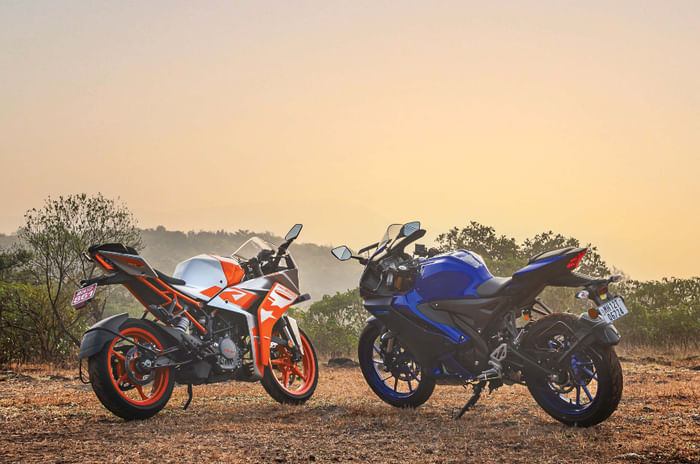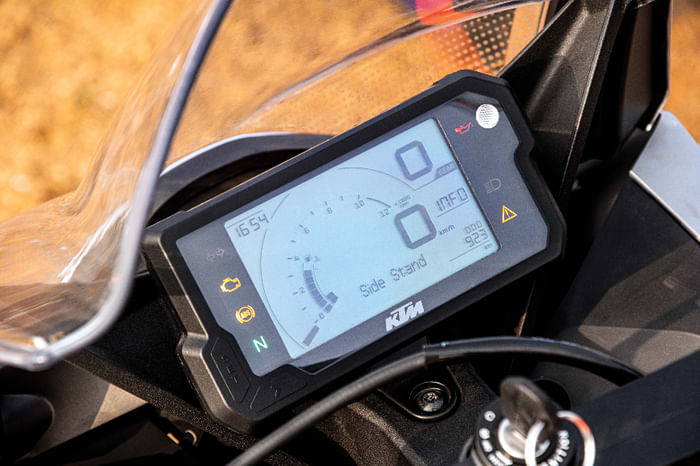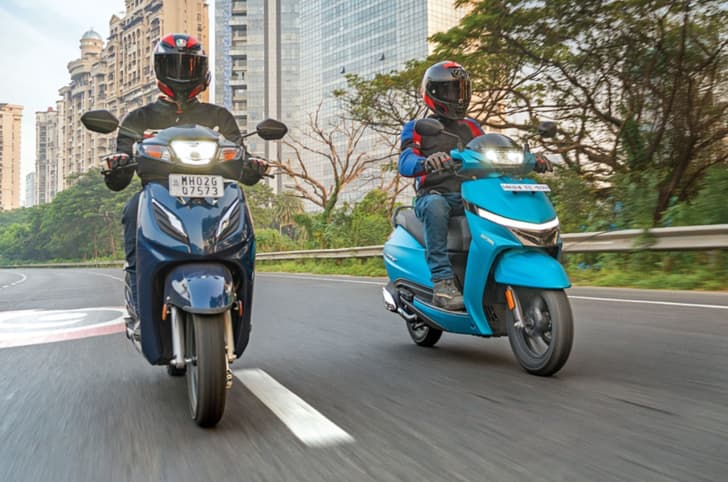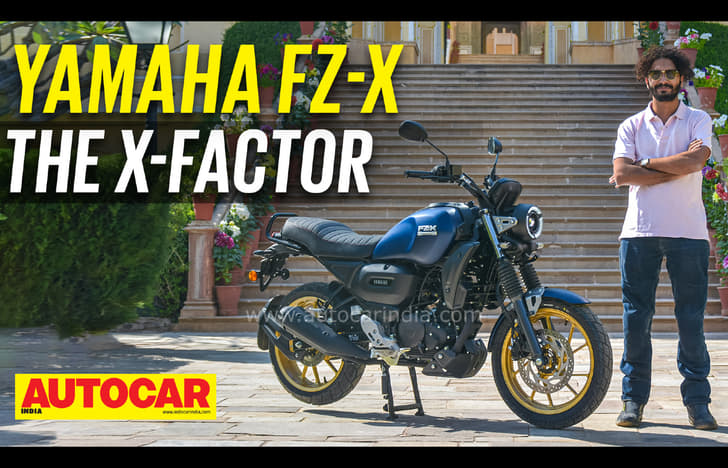Motorcycling is a wonderfully multifaceted thing – there’s so many different genres and activities within motorcycling, each of which resonates with a different set of riders. Some are more than happy to do their routine Sunday breakfast and coffee rides, others thrive off exploring a new trail through the forest each weekend. But for many (including me), perhaps, the biggest attraction within motorcycling is circuit racing. Some of the very best riders in the world wrapped in custom-tailored animal hide aboard purpose-built, razor-sharp, fully faired machines, absolutely tearing up a racetrack in their pursuit for victory.
As a new rider, the only way to emulate such a thing is by getting yourself an entry-level sportsbike –something like the Yamaha R15 or the KTM RC 200. The former kickstarted the small sportsbike movement in India and is now in its fourth iteration. The latter has just received its first comprehensive update and feels like a considerably different machine than before. The stage is set. But first, the reason we’re not using the smaller RC 125 is because the 125 simply can’t match the R15’s levels of performance or equipment, even though it costs almost exactly the same as the Yammie.
HEY, NO FAIR!
Let’s get the elephant out of the way: the R15 has an obvious displacement, power and torque handicap. But the VVA technology helps it distribute its limited torque efficiently across the rev range, and more importantly, it’s almost 20kg lighter than the Austrian. But hard as it may try, in this case, there simply is no replacement for displacement. Sure, the RC is now hefty for its class, but we’re talking almost 30 percent more displacement, 40 percent more power, and nearly 40 percent more torque than the R15.
The result is felt in our backsides, and confirmed by the VBox. There isn’t a night and day difference, but the Mattighofen missile is a noticeably quicker motorcycle – almost a second quicker to 80kph and almost 2sec quicker to 100kph than the R15. It isn’t just when going flat out either. Sure, the R15 has a very tractable motor that effortlessly chugs along at low RPM, but twisting the throttle harder at this point fails to result in any appreciable increase in acceleration. If you really want to pick up the pace, you need to work this motor hard and explore the latter-half of the tachometer.
The RC, meanwhile, feels equally tractable at low RPMs, but has a lot more punch when you open the taps, and it munches through its gears with a ferocity that the Yamaha just can’t hope to match. A small part of this is down to the fact that even though it’s the larger motorcycle here, the RC is actually geared shorter than the R15, hitting its limiter in 6th at around 140kph (indicated), while the Yamaha has the gearing to go faster still. Though on flat ground, its top speed is about the same as that of the KTM.
Where it does have a definite upper hand, though, is refinement. In typical Yamaha fashion, the motor feels butter smooth for the most part, with barely any vibrations coming through to the rider in everyday riding patterns. It’s only at the very top of its rev range that it begins to sound and feel a little harsh, and even there, it’s still a far cry from the KTM’s busy and buzzy motor. Sure, the RC feels considerably less harsh than it used to, but in this company, it’s certainly the gruffer feeling bike.
LEAN ON ME
If you’re still reading this, chances are you’re very interested in knowing how these puppies handle the twisties. And if the opening image of this story hasn’t given it away already, both these bikes are plenty capable through the corners. But it’s the R15 that’s that little bit more engaging and involving to be on – it feels tauter and lighter, a little more nimble and agile; you’re just wired into the bike and the experience that little bit more. The RC is still a very competent corner carver, but it doesn’t feel quite as immediate and reactive as the Yamaha.
The trade-off, though, is versatility. With a roomier riding position and more relaxed ergonomics than before, the RC’s everyday usability has taken a significant leap forward. Long highway stints and everyday city commutes both seem far less daunting than before, and the KTM now actually seats you more comfortably than the R15 and offers the same treatment to your pillion, too. It also looks and feels a size larger, and is far better suited to taller riders.
The R15, with its lower seat height and noticeably smaller dimensions, is a better fit for shorter riders, but there’s no getting around the aggressive seating posture, which does take a toll on your neck, back and wrists. The bars are low and tapered, the pegs are placed high, and the seats are far narrower and more unforgiving. But hey, you wanted a little taste of the lives of your MotoGP heroes, right? Here it is. Thing is, Rossi doesn’t have to ride his M1 into the office every morning.
(NOT SO)HARDCORE
Admittedly, comfort isn’t a very high priority when considering either of these bikes, but one area where both of them are more comfortable than their format suggests is ride quality. The R15 has never been a harshly sprung motorcycle, and now, with its more premium and stylish golden upside-down fork, it continues to offer a reasonably comfortable ride, doing a great job of rolling over small undulations. While you can feel the limits of its travel at higher speeds and over larger imperfections, it never feels harsh. But the RC significantly ups the ante, with a more absorptive ride that isolates you excellently from the road beneath, without ever feeling anywhere close to soft or wallowy in the twisties. Its shock seems to be quite soft, with a lot of sag, but KTM appears to have got the damping rates spot on, and the ride is extremely well-balanced.
LOOK AT ME
As great as these bikes are to ride, they also have another very important function, and that is making a statement. And both do a great job of that – they both have rather striking and unique designs that are sure to grab attention. To my eyes, however, they’re perhaps not the prettiest bikes out there. The KTM’s proportions could be better, and even though the R15 is more proportionate, the ‘headlight inside air-intake’ approach is a personal deal-breaker. But while you’ll probably have your own preferences, it’s absolutely impossible to ignore them.

It’s also impossible to ignore the fact that despite being the more affordable bike here, the R15’s quality and finish levels are a small notch above the KTM’s. The plastics, touch points, switchgear and paint just feel that little bit more premium, but it’s certainly not like the KTM’s a poorly built machine. It actually has the crisper digital display (even though it misses out on Bluetooth), and the considerably better performing LED headlight, too. The R15 does get Bluetooth, but functionality is quite basic, and its screen doesn’t feel quite as slick and modern as the RC’s.

DIVING IN
The R15 still makes for an excellent motorcycle for anyone who enjoys the sportiness of motorcycling and the thrill of cornering. But it’s also a little narrower in its focus, and demands more from you as a rider. The riding posture is that little bit more committed, you have to work the engine harder, it’s not as good a tourer, and it feels quite small. The RC, meanwhile, is capable of pretty much everything that the R15 is, but is also noticeably faster and feels like a larger bike. Strangely enough, the KTM is the more comfortable, usable and versatile bike – whoever thought we’d be using words like that for a sporty KTM!
There’s no doubt that the R15 is better than it has ever been, and the gap between these two bikes is closer than ever. But these are both bikes that you’re likely to buy early on in your life, as a college student or a young professional, so they’re likely to be the only bike in your garage. Which means that any extra usability and versatility that they can offer is going to be greatly appreciated. Keeping that in mind, the extra Rs 35,000 or so in ex-showroom price you pay for the RC seems like money well spent. I know I would, if I could.







































